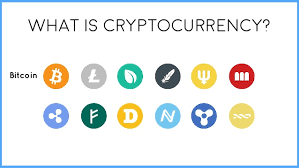
Bitcoin sailed past the $1,500 mark on Thursday,
pushing the total value of the digital-currency market above $40 billion for the first time. Litecoin, another prominent bitcoin rival, advanced 22% to $25, its highest level in more than three years, after Coinbase, one of the most popular digital-currency exchanges in the U.S., enabled trading in the cryptocurrency. The top 14 most heavily traded digital currencies have all realized astounding gains over the past month as investors who have booked large profits trading bitcoin and rival Ethereum have sought to diversify and increase their chances of cashing in on the next big cryptocurrency rally, according to Chris Dannen, founder of Iterative Instinct a New York-based cryptocurrency venture fund.
“Not only are the smaller coins obscure and cheap, but they represent a chance to get those huge returns all over again,” Dannen said. The price of a single bitcoin BTCUSD, +2.25% has more than tripled since the beginning of 2016, when it traded around $450. It peaked at $1,589 on Thursday, according to the CoinDesk bitcoin price index. One ether token traded at $90.95. Dash, the fifth most popular token, traded at $96. Bitcoin’s advance has coincided with its growing acceptance by regulators. A law passed by Japanese lawmakers earlier this year that allows financial institutions to participate in the digital-currency market took effect in April.
Also, regulators in Russia and India have signaled their willingness to legalize bitcoin and its peers. However, bitcoin trading volume in China, once its largest market, plunged after authorities forced the largest exchanges in the country to institute transaction fees and halt withdrawals until they could upgrade their anti-money-laundering systems. New rules require exchanges based in China to verify customers’ identities. In March, the Securities and Exchange Commission rejected two proposals that would have led to the creation of bitcoin-focused exchange-traded funds. But the decision elicited only a brief dip in the bitcoin price.
The SEC has since said it would review its March 10 decision that effectively killed the Winklevoss Bitcoin Trust. Grayscale’s proposal to allow its Grayscale Bitcoin Investment Trust to begin trading on the New York Stock Exchange’s ETF platform is currently being reviewed, but a decision isn’t imminent. The value of cryptocurrencies, however, have varied dramatically between exchanges, prompting Charles Hayter, the chief executive officer and founder of Cryptocompare, to worry about a possible pullback.
On Bitfinex, one of the largest digital currency exchanges in the world, customers paid a $100 premium as they scrambled to move their assets off its platform. The exchange announced two weeks ago that it would temporarily suspend dollar withdrawals after it was effectively cut off from the financial system. “Cryptos have hit a period of volatility as the markets have become dislocated. Prices on exchanges are showing huge discrepancies in terms of pricing and arbitrage is rife,” Hayter said.
Bitcoin’s advance has coincided with its growing acceptance by regulators. A law passed by Japanese lawmakers earlier this year that allows financial institutions to participate in the digital-currency market took effect in April.Also, regulators in Russia and India have signaled their willingness to legalize bitcoin and its peers.However, bitcoin trading volume in China, once its largest market, plunged after authorities forced the largest exchanges in the country to institute transaction fees and halt withdrawals until they could upgrade their anti-money-laundering systems. New rules require exchanges based in China to verify customers’ identities.
In March, the Securities and Exchange Commission rejected two proposals that would have led to the creation of bitcoin-focused exchange-traded funds. But the decision elicited only a brief dip in the bitcoin price. The SEC has since said it would review its March 10 decision that effectively killed the Winklevoss Bitcoin Trust. Grayscale’s proposal to allow its Grayscale Bitcoin Investment Trust to begin trading on the New York Stock Exchange’s ETF platform is currently being reviewed, but a decision isn’t imminent.
The value of cryptocurrencies, however, have varied dramatically between exchanges, prompting Charles Hayter, the chief executive officer and founder of Cryptocompare, to worry about a possible pullback. On Bitfinex, one of the largest digital currency exchanges in the world, customers paid a $100 premium as they scrambled to move their assets off its platform. The exchange announced two weeks ago that it would temporarily suspend dollar withdrawals after it was effectively cut off from the financial system. “Cryptos have hit a period of volatility as the markets have become dislocated. Prices on exchanges are showing huge discrepancies in terms of pricing and arbitrage is rife,” Hayter said.
Chuck Reynolds
Contributor
Alan Zibluk Markethive Founding Member





 Introduced in 2008 as the technology underpinning Bitcoin, a digital currency that is created and held electronically without any central authority, blockchain is a secure digital ledger for any kind of data. It simplifies record keeping and reduces transaction costs.Its range of applications in commerce, finance and potentially politics continues to widen, and that has triggered a debate around how to regulate the tool.
Introduced in 2008 as the technology underpinning Bitcoin, a digital currency that is created and held electronically without any central authority, blockchain is a secure digital ledger for any kind of data. It simplifies record keeping and reduces transaction costs.Its range of applications in commerce, finance and potentially politics continues to widen, and that has triggered a debate around how to regulate the tool.





